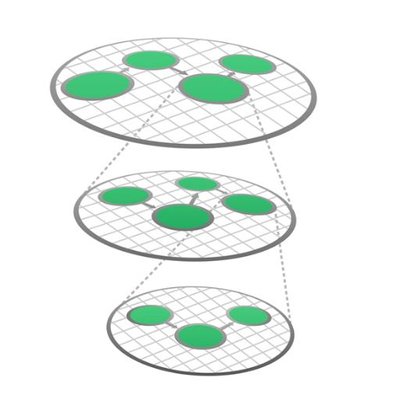Mock sample for your project: Ritc API
Integrate with "Ritc API" from ritc.io in no time with Mockoon's ready to use mock sample

Ritc
ritc.io
Version: 1.0.0
Start working with "Ritc API" right away by using this ready-to-use mock sample. API mocking can greatly speed up your application development by removing all the tedious tasks or issues: API key provisioning, account creation, unplanned downtime, etc.
It also helps reduce your dependency on third-party APIs and improves your integration tests' quality and reliability by accounting for random failures, slow response time, etc.
Description
Rules in the Cloud
Other APIs in the same category

ApiManagementClient
azure.com
Use these REST APIs for performing operations on User entity in Azure API Management deployment. The User entity in API Management represents the developers that call the APIs of the products to which they are subscribed.

Anomaly Finder Client
azure.com
The Anomaly Finder API detects anomalies automatically in time series data. It supports two functionalities, one is for detecting the whole series with model trained by the timeseries, another is detecting last point with model trained by points before. By using this service, business customers can discover incidents and establish a logic flow for root cause analysis.

AWS DataSync
DataSync DataSync is a managed data transfer service that makes it simpler for you to automate moving data between on-premises storage and Amazon Simple Storage Service (Amazon S3) or Amazon Elastic File System (Amazon EFS). This API interface reference for DataSync contains documentation for a programming interface that you can use to manage DataSync.

AutomationManagement
azure.com

AWS Certificate Manager Private Certificate Authority
This is the ACM Private CA API Reference. It provides descriptions, syntax, and usage examples for each of the actions and data types involved in creating and managing private certificate authorities (CA) for your organization. The documentation for each action shows the Query API request parameters and the XML response. Alternatively, you can use one of the AWS SDKs to access an API that's tailored to the programming language or platform that you're using. For more information, see AWS SDKs. Each ACM Private CA API operation has a quota that determines the number of times the operation can be called per second. ACM Private CA throttles API requests at different rates depending on the operation. Throttling means that ACM Private CA rejects an otherwise valid request because the request exceeds the operation's quota for the number of requests per second. When a request is throttled, ACM Private CA returns a ThrottlingException error. ACM Private CA does not guarantee a minimum request rate for APIs. To see an up-to-date list of your ACM Private CA quotas, or to request a quota increase, log into your AWS account and visit the Service Quotas console.

ApplicationInsightsManagementClient
azure.com
Azure Application Insights client for API keys of a component.

ApiManagementClient
azure.com
Use these REST APIs for performing retrieving a collection of policy snippets available in Azure API Management deployment.

AWS Resource Access Manager
This is the Resource Access Manager API Reference. This documentation provides descriptions and syntax for each of the actions and data types in RAM. RAM is a service that helps you securely share your Amazon Web Services resources across Amazon Web Services accounts and within your organization or organizational units (OUs) in Organizations. For supported resource types, you can also share resources with IAM roles and IAM users. If you have multiple Amazon Web Services accounts, you can use RAM to share those resources with other accounts. To learn more about RAM, see the following resources: Resource Access Manager product page Resource Access Manager User Guide

Amazon Lex Model Building V2

Auto Scaling
Amazon EC2 Auto Scaling Amazon EC2 Auto Scaling is designed to automatically launch or terminate EC2 instances based on user-defined scaling policies, scheduled actions, and health checks. For more information about Amazon EC2 Auto Scaling, see the Amazon EC2 Auto Scaling User Guide. For information about granting IAM users required permissions for calls to Amazon EC2 Auto Scaling, see Granting IAM users required permissions for Amazon EC2 Auto Scaling resources in the Amazon EC2 Auto Scaling API Reference.

ApiManagementClient
azure.com
Use these REST APIs for performing operations on Group entity in your Azure API Management deployment. Groups are used to manage the visibility of products to developers. Each API Management service instance comes with the following immutable system groups whose membership is automatically managed by API Management. - Administrators - Azure subscription administrators are members of this group. - Developers - Authenticated developer portal users fall into this group. - Guests - Unauthenticated developer portal users are placed into this group. In addition to these system groups, administrators can create custom groups or leverage external groups in associated Azure Active Directory tenants. Custom and external groups can be used alongside system groups in giving developers visibility and access to API products. For example, you could create one custom group for developers affiliated with a specific partner organization and allow them access to the APIs from a product containing relevant APIs only. A user can be a member of more than one group.

AWS IoT Jobs Data Plane
AWS IoT Jobs is a service that allows you to define a set of jobs — remote operations that are sent to and executed on one or more devices connected to AWS IoT. For example, you can define a job that instructs a set of devices to download and install application or firmware updates, reboot, rotate certificates, or perform remote troubleshooting operations. To create a job, you make a job document which is a description of the remote operations to be performed, and you specify a list of targets that should perform the operations. The targets can be individual things, thing groups or both. AWS IoT Jobs sends a message to inform the targets that a job is available. The target starts the execution of the job by downloading the job document, performing the operations it specifies, and reporting its progress to AWS IoT. The Jobs service provides commands to track the progress of a job on a specific target and for all the targets of the job